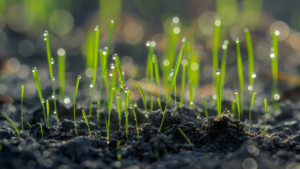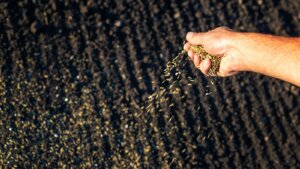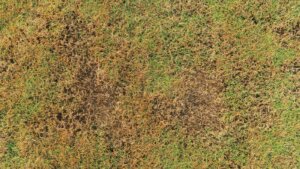Wild onion grass is a perennial grass that is native to North America. It has long, thin blades of grass and produces small white flowers in the summer. The leaves have a distinctive onion-like smell when crushed. This grass can be found growing in lawns, gardens, and fields throughout the United States. Wild onion grass can be an attractive addition to any landscape – but it can also become a real problem in your landscape if not properly managed.
Why Does Onion Grass Grow On Lawns?
Onion grass is an invasive species that spreads quickly and is generally difficult to get rid of. Lawns generally are moist, shady areas with plenty of organic matter, which is just the right environment for onion grass. Once in your lawn, it will thrive and grow quickly, developing a deep root system, making it difficult to remove from the soil once established. Homeowners should take steps to prevent onion grass from taking over their lawns with regular lawn maintenance. Proper care includes mowing regularly, removing any excess debris, and avoiding overwatering or overfertilizing the area, which can be tempting. With proper maintenance, homeowners can keep onion grass from becoming a nuisance on their property.
How To Get Rid of Onion Grass
Onion grass can be annoying to remove, but it is definitely possible. If your lawn has been taken over, there are still plenty of ways to restore your lawn to its former glory. With the right techniques and tools, you can easily remove onion grass from your lawn and keep it looking healthy and attractive.
Chemical Methods
The most common chemical method of removing onion grass from lawns is to use a herbicide that contains glyphosate, which is designed to kill the onion grass without harming the surrounding grass. This method is often considered the most cost-effective and quickest way to remove onion grass from a lawn. However, it also carries some risks, such as potential damage to other plants in the area or even harm to pets and people if not used properly. You should always consult with a landscaping expert and be sure to read all package instructions before applying any herbicide or pesticide to your lawn.
Post-emergent herbicides can be used after the weeds have already emerged but before flowering. However, it’s important to keep in mind that these products are often more expensive than pre-emergents and may require multiple applications for full effectiveness. Homeowners should carefully consider their options when deciding on a chemical method of removing onion grass from their lawns. It’s always a good idea to speak with a professional if you have questions or concerns about your lawn!
Natural Methods
One of the most popular natural methods of removing onion grass is to use a combination of trowelling and mulching. Trowelling involves manually digging out the onion grass by its roots, while mulching helps to smother the weed and prevent it from growing back. Both methods are effective, but they require regular maintenance in order to keep the onion grass at bay. However, they may be a more attractive option for people who have pets or children as an alternative to chemical methods.
You can also try using corn gluten meal as a natural weed killer for onion grass. Corn gluten meal is an organic fertilizer that works by preventing new weeds from germinating and taking root in your lawn. It’s best used when applied in early spring before weeds have had a chance to take hold of your lawn.
Conclusion
Using a professional lawn care service to remove onion grass is one of the best ways to ensure your lawn looks its best. With Terra Lawn Care’s expertise and specialized equipment, you can quickly and effectively remove onion grass without damaging your lawn. We also use environmentally friendly methods that are safe for pets and children. Plus, we can provide tips on how to prevent future onion grass growth.






